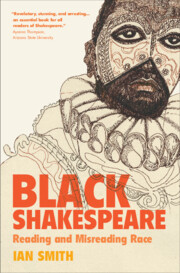Introduction
Toward Racial Literacy
Published online by Cambridge University Press: 08 September 2022
Summary
Addressed to “the Great Variety of Readers,” the 1623 First Folio envisioned a reading subject whose importance time would realize. The unstated assumptions about readers lay in their unraced “variety,” and the significance of racial identity on the act of reading Shakespeare has been virtually taboo. With the advent of early modern critical race studies that challenged assumptions and methods in Shakespeare scholarship, the salience of Toni Morrison’s assertion in Playing in the Dark (1992) that readers are “positioned as white” needs investigation in relation to contemporary scholar-readers of Shakespeare. Whiteness studies, a subfield that Morrison’s text represents, intersects with early modern critical race studies in this book’s original examination of the reader as racial subject. Systemic whiteness, the historical and institutional formation of white racial identity and perception, has infused our cultural practices only to produce silence around the “white” reader. Racial literacy is proposed, therefore, as an acquired antiracist reading competence in response to the overdetermined critical practices of racial denial and erasure.
- Type
- Chapter
- Information
- Black ShakespeareReading and Misreading Race, pp. 1 - 30Publisher: Cambridge University PressPrint publication year: 2022

